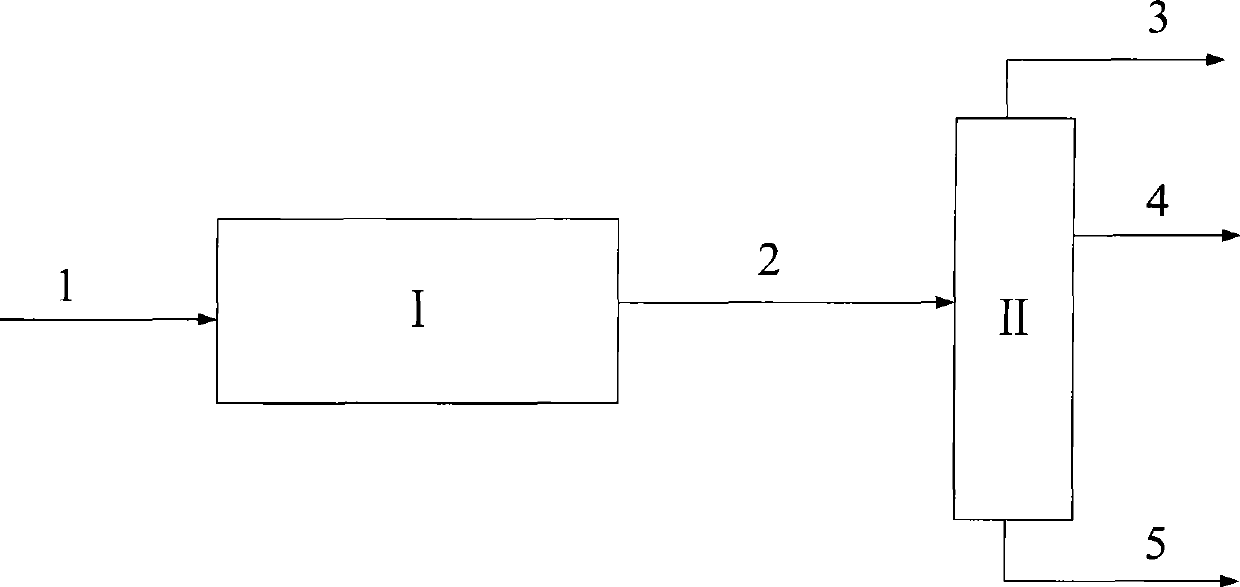Method for separating p-xylene crystal
A technology for the separation of p-xylene and crystallization, which is applied in crystallization purification/separation, organic chemistry, etc., can solve the problems of complex operation and high investment in xylene, and achieve the effect of cheap price, low investment and good technical effect
- Summary
- Abstract
- Description
- Claims
- Application Information
AI Technical Summary
Problems solved by technology
Method used
Image
Examples
Embodiment 1
[0015] The mixed xylene raw material is sent to the scraping wall crystallizer, and the crystallization temperature is -10°C to form a slurry. The slurry is sent to a simulated moving bed with 6 beds, and the flow is switched through a rotary valve to realize the simulated moving bed. Different functions, one of which is a filter bed, three are washing beds, one is a crystal melting bed, and one is a product output bed. The slurry was filtered, washed and crystals were purified in a simulated moving bed, and the washing liquid / crystal weight ratio was 0.2 to obtain pure p-xylene. After the test runs stably, the composition of each stream is shown in Table 1.
[0016] The composition (% by weight) of each stream among the table 1 embodiment 1
[0017] components raw material mother liquor Rinse pure p-xylene Ethylbenzene 5.0 11.2 5.8 0.0 m-xylene 5.0 11.4 6.2 0.1 O-xylene 10.0 22.6 12.6 0.1 p-xylene 80.0 54.8 75.4 99.8 ...
Embodiment 2
[0019] The mixed xylene raw material is sent to the stirring crystallizer, and the crystallization temperature is -80°C to form a slurry. The slurry is sent to a simulated moving bed with 10 beds, and the flow is switched through a rotary valve to realize the difference of the simulated moving bed Function, of which 1 bed is filter bed, 5 are washing beds, 3 are crystal melting beds, and 2 are product output beds. The slurry was filtered, washed and crystals were purified in a simulated moving bed, and the washing liquid / crystal weight ratio was 0.5 to obtain pure p-xylene. After the test runs stably, the composition of each stream is shown in Table 2.
[0020] The composition (% by weight) of each stream in the embodiment 2 of table 2
[0021] components raw material mother liquor Rinse pure p-xylene Ethylbenzene 15.0 33.5 14.4 0.1 m-xylene 10.0 19.7 8.7 0.0 O-xylene 15.0 34.1 13.4 0.1 p-xylene 60.0 12.7 63.5 99.8
Embodiment 3
[0023] The mixed xylene raw material is sent to the scraping wall crystallizer, and the crystallization temperature is 5°C to form a slurry. The slurry is sent to a simulated moving bed with 8 beds, and the flow is switched through a rotary valve to realize the difference of the simulated moving bed Function, of which 1 bed is filter bed, 3 are washing beds, 2 are crystal melting beds, and 2 are product output beds. The slurry was filtered, washed and crystals were purified in a simulated moving bed, and the washing liquid / crystal weight ratio was 0.05 to obtain pure p-xylene. After the test runs stably, the composition of each stream is shown in Table 3.
[0024] The composition (% by weight) of each stream among the table 3 embodiment 3
[0025] components raw material mother liquor Rinse pure p-xylene Ethylbenzene 2.0 7.2 3.7 0.1 m-xylene 1.0 3.5 1.8 0.0 O-xylene 2.0 7.6 3.3 0.1 p-xylene 95.0 81.7 91.2 99.8
PUM
 Login to View More
Login to View More Abstract
Description
Claims
Application Information
 Login to View More
Login to View More - R&D
- Intellectual Property
- Life Sciences
- Materials
- Tech Scout
- Unparalleled Data Quality
- Higher Quality Content
- 60% Fewer Hallucinations
Browse by: Latest US Patents, China's latest patents, Technical Efficacy Thesaurus, Application Domain, Technology Topic, Popular Technical Reports.
© 2025 PatSnap. All rights reserved.Legal|Privacy policy|Modern Slavery Act Transparency Statement|Sitemap|About US| Contact US: help@patsnap.com

